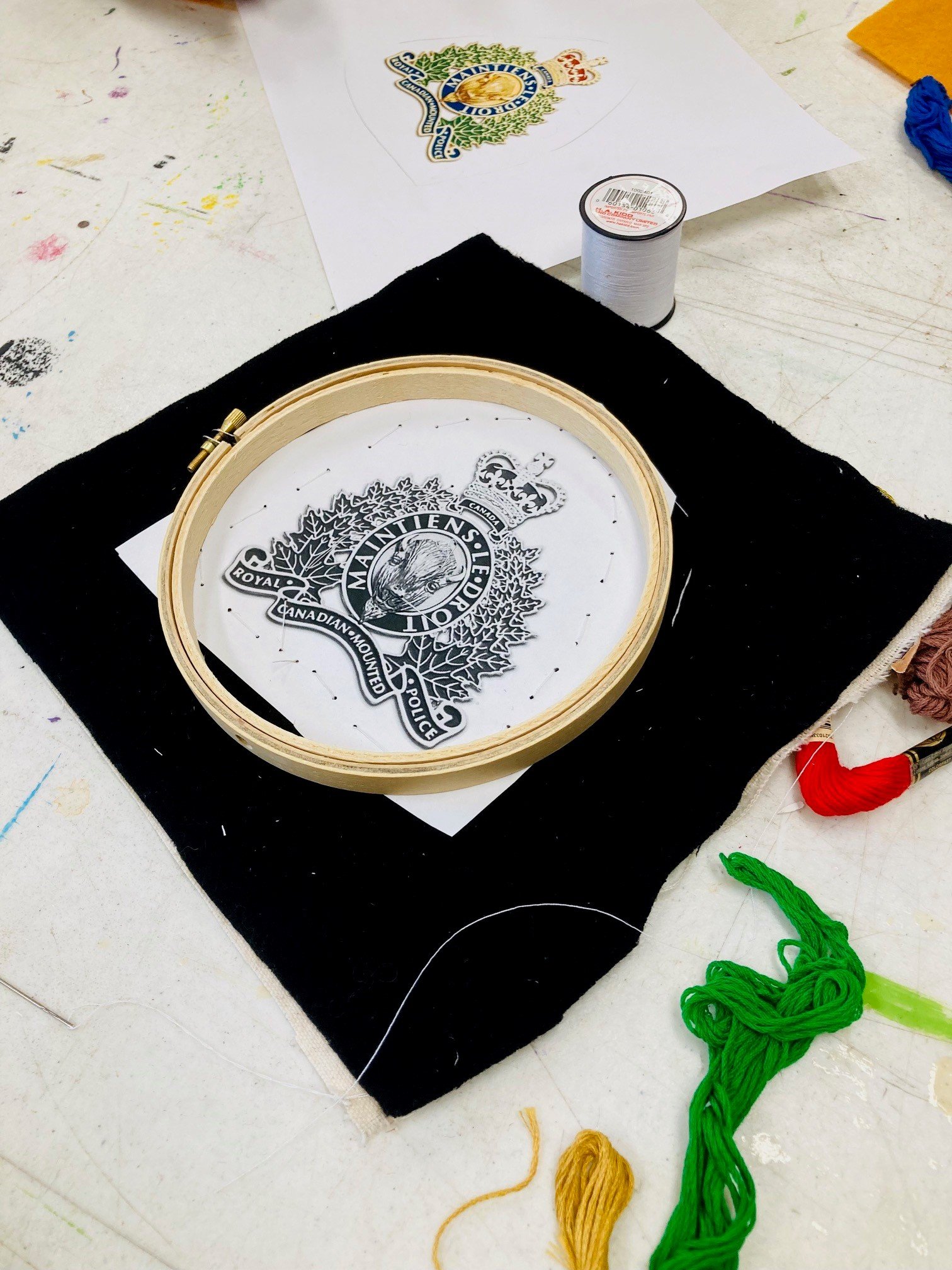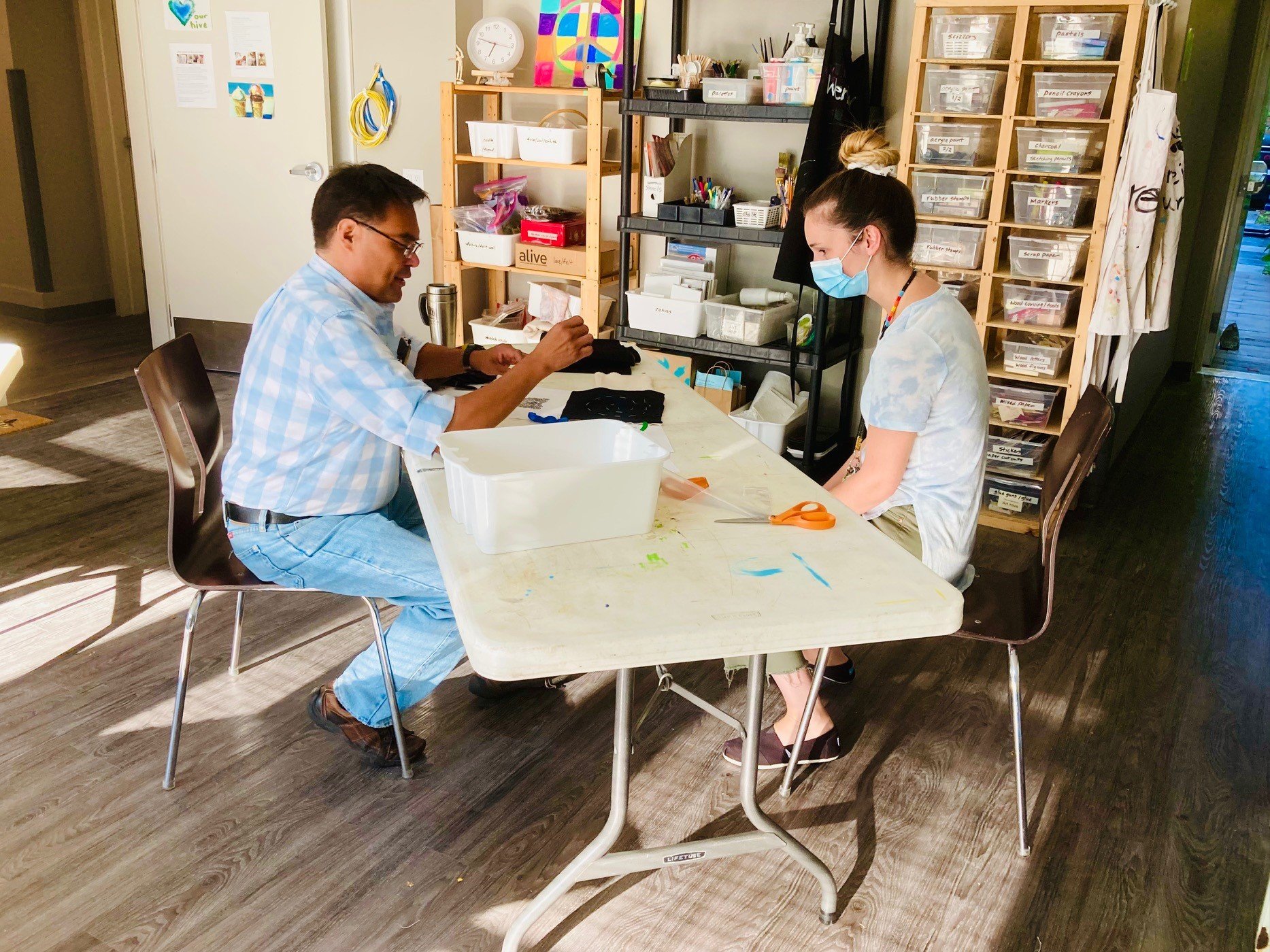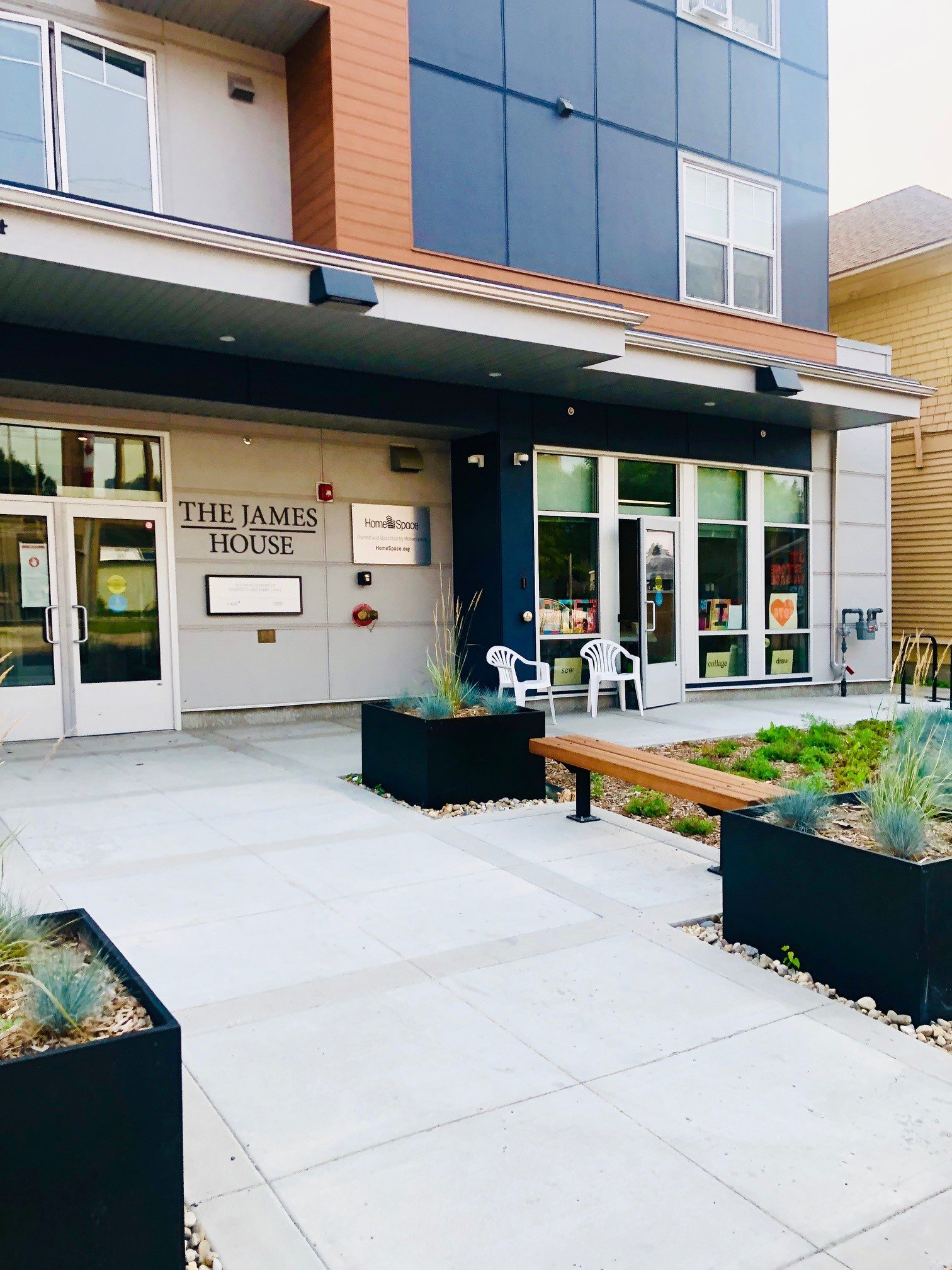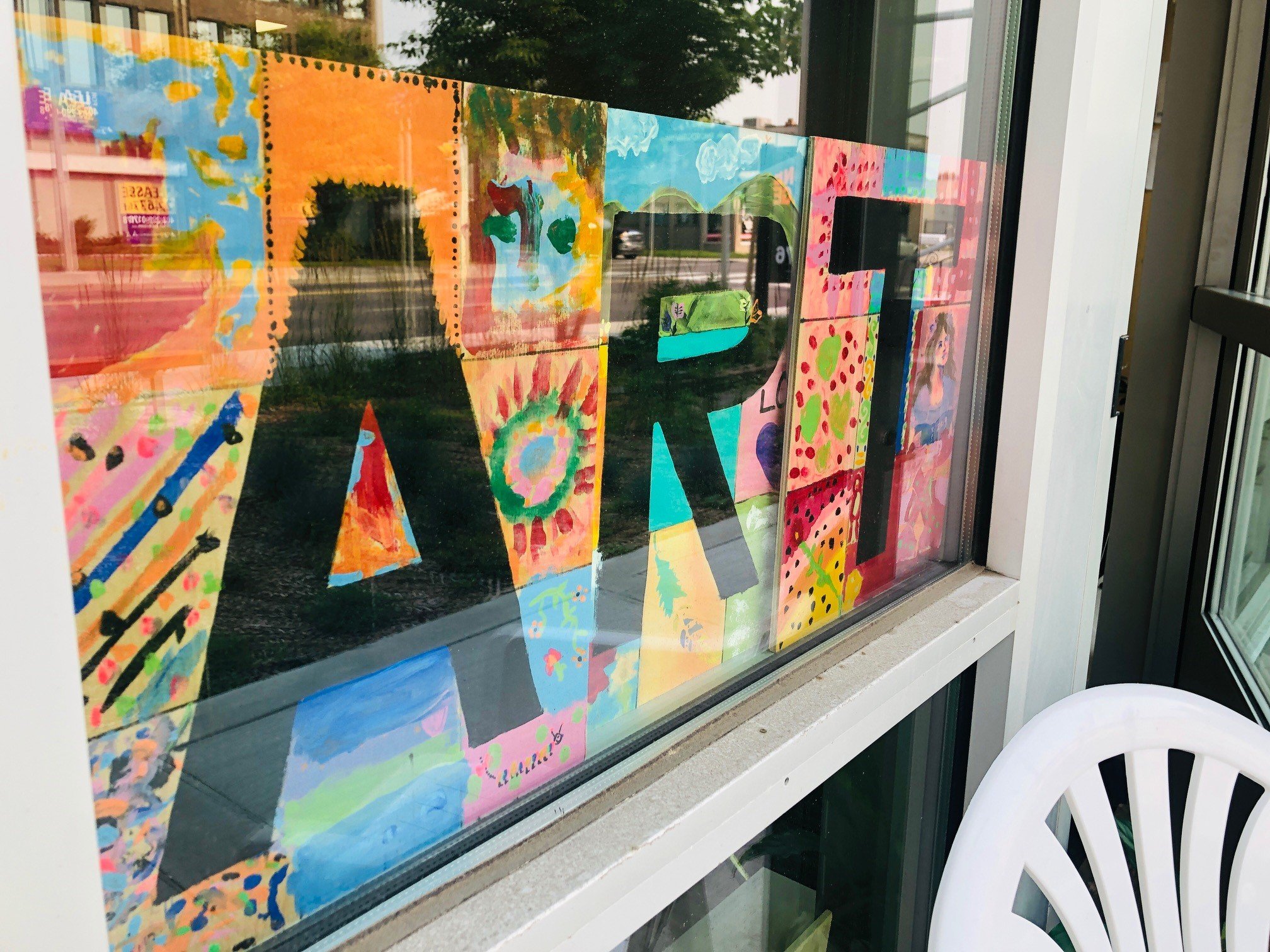The artist finds his way home
As a child in Fort Simpson Marty’s eldest sister gave him a pair of beaded moccasins.The smell of the moose hide and the intricate beadwork sparked a passion for embroidery in Marty that would carry him through some very desperate times. “When I'm doing something like this, even when I’m working on one small area, I'm looking at it as a whole,” says Marty. “I can see it. Like, in my mind, in my mind's eye, I can see the finished product.”Marty was a child of the 60’s scoop, adopted into a Caucasian family as a child. He says he feels disconnected from indigenous culture and community, and he still lives with PTSD from his difficult childhood.“Growing up I always was called wagon-burner… stupid Indian. I was bullied because I was native, but I don’t feel native. I don’t have the heritage, I really don’t connect. But I was still treated like a native” he says.But he’s always had an eye for detail and a knack for the creative. Even without elders to pass along knowledge of bead and leatherwork, at the age of 14 he began teaching himself the art-form of embroidery. Spending days and sometimes weeks creating intricate images with traditional materials.
“When I'm doing something like this, even when I’m working on one small area, I'm looking at it as a whole,” says Marty. “I can see it. Like, in my mind, in my mind's eye, I can see the finished product.”Marty was a child of the 60’s scoop, adopted into a Caucasian family as a child. He says he feels disconnected from indigenous culture and community, and he still lives with PTSD from his difficult childhood.“Growing up I always was called wagon-burner… stupid Indian. I was bullied because I was native, but I don’t feel native. I don’t have the heritage, I really don’t connect. But I was still treated like a native” he says.But he’s always had an eye for detail and a knack for the creative. Even without elders to pass along knowledge of bead and leatherwork, at the age of 14 he began teaching himself the art-form of embroidery. Spending days and sometimes weeks creating intricate images with traditional materials. Marty eventually moved away from Fort Simpson to Calgary where he worked happily in the landscaping industry. Known as quiet, and polite, and a very snappy dresser, in his free time he pursued his craft of embroidery.Then the recession in Calgary hit the little landscaping company hard. He lost his job, then lost his car, and eventually quiet, creative, neatly dressed Marty… found himself homeless.He bounced between shelters, where violence and theft plagued him. He lost his phone, put away his nice clothes, and even his art supplies were eventually lost over time.“I came to the realization that I couldn’t trust anybody, I would get anxious as I approached the shelter each day on the bus. Day after day… it wears on you,” says Marty.A staff member at the Mustard Seed worked with Marty to get him off the streets. He was an excellent candidate for permanent supportive housing, and he moved into the The James House in February.
Marty eventually moved away from Fort Simpson to Calgary where he worked happily in the landscaping industry. Known as quiet, and polite, and a very snappy dresser, in his free time he pursued his craft of embroidery.Then the recession in Calgary hit the little landscaping company hard. He lost his job, then lost his car, and eventually quiet, creative, neatly dressed Marty… found himself homeless.He bounced between shelters, where violence and theft plagued him. He lost his phone, put away his nice clothes, and even his art supplies were eventually lost over time.“I came to the realization that I couldn’t trust anybody, I would get anxious as I approached the shelter each day on the bus. Day after day… it wears on you,” says Marty.A staff member at the Mustard Seed worked with Marty to get him off the streets. He was an excellent candidate for permanent supportive housing, and he moved into the The James House in February. The James House is a 27 unit apartment building built by the HomeSpace Society in the Hillhurst Community of Calgary. Adults at risk of homelessness are provided an affordable apartment and plenty of support from McMan Youth, Family & Community Services .“It’s good yeah, I've actually got a fridge, It's full of groceries. I can actually make toast, even an egg sandwich! But yeah, things are actually looking up right now. It feels great.”One of the greatest pleasures for Marty in his new home is The James House Art Hive. The James House Art Hive is supported by McMan Calgary and Area and run by Community Art Facilitator Wendy Lees. There Marty has been able to take up his old passion and reconnect with his heritage through art.Through grants secured by McMan Calgary and Area as well as generous donations, Wendy has sourced some of the specialty materials Marty needs to work on his embroidery. She found the thick Stroud trade cloth that holds the stitches just right, and gold thread perfect for the RCMP logo he is embroidering in honor of an old friend.Having a community full of compassionate people like Wendy to support his creative endeavors, has breathed new life into Marty. Plus, having a safe place to live has given him the stability he needs to renew his search for employment.For Marty, affordable housing and compassionate, culturally appropriate care has made all the difference.“Being here, I don’t feel so anxious, it's kind of like coming up from a mile underneath the sea and finally breaking the surface.”
The James House is a 27 unit apartment building built by the HomeSpace Society in the Hillhurst Community of Calgary. Adults at risk of homelessness are provided an affordable apartment and plenty of support from McMan Youth, Family & Community Services .“It’s good yeah, I've actually got a fridge, It's full of groceries. I can actually make toast, even an egg sandwich! But yeah, things are actually looking up right now. It feels great.”One of the greatest pleasures for Marty in his new home is The James House Art Hive. The James House Art Hive is supported by McMan Calgary and Area and run by Community Art Facilitator Wendy Lees. There Marty has been able to take up his old passion and reconnect with his heritage through art.Through grants secured by McMan Calgary and Area as well as generous donations, Wendy has sourced some of the specialty materials Marty needs to work on his embroidery. She found the thick Stroud trade cloth that holds the stitches just right, and gold thread perfect for the RCMP logo he is embroidering in honor of an old friend.Having a community full of compassionate people like Wendy to support his creative endeavors, has breathed new life into Marty. Plus, having a safe place to live has given him the stability he needs to renew his search for employment.For Marty, affordable housing and compassionate, culturally appropriate care has made all the difference.“Being here, I don’t feel so anxious, it's kind of like coming up from a mile underneath the sea and finally breaking the surface.”

